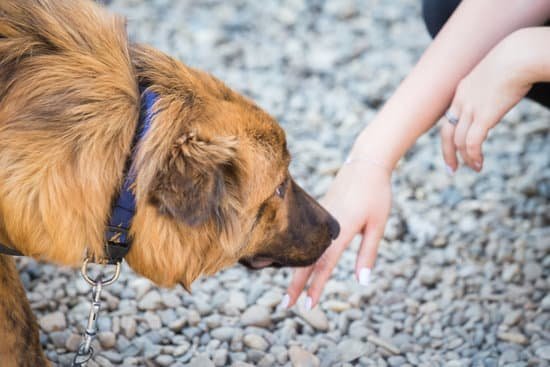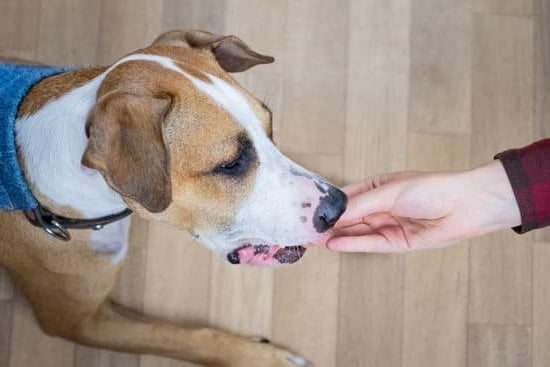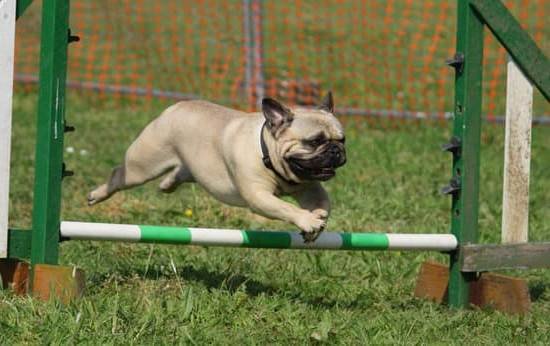Crate training a dog during the day is a great way to keep them out of trouble and safe while you’re away. Dogs are instinctively den animals and will feel safe and secure in a crate. The key to successful crate training is to make the crate a positive experience for the dog.
The first step is to introduce the dog to the crate. Put a soft blanket or towel in the crate and let the dog explore it on their own. Encourage them to go in and out of the crate and give them a treat when they do. Once the dog is comfortable going in and out of the crate, you can start to close the door for a few seconds at a time. Gradually increase the amount of time the door is closed.
The next step is to train the dog to go in the crate on cue. When the dog is calm and relaxed, say “crate” and give them a treat. As they get more comfortable with the cue, you can start to use it when the dog is misbehaving. Say “crate” and give them a timeout in the crate.
The key to crate training is to be consistent and patient. It may take a few days or weeks for the dog to fully adjust to the crate, but with patience and positive reinforcement, you will have a happy and well-behaved dog.
How To Start Crate Training Your Dog
One of the first things you will need to do when you get a new dog is to start crate training. Crate training is a very important part of dog training because it helps to potty train your dog and it also gives them a safe place to go when they are not allowed to be in certain areas of the house.
The first step in crate training is to get your dog used to the crate. You can do this by putting the crate in a room where your dog spends a lot of time and putting some of their toys and blankets in the crate. Once your dog is comfortable going in and out of the crate, you can start using it as a place to put them when you are not able to watch them.
If your dog is having a hard time with potty training, you can put them in the crate for a short period of time after they have gone potty. This will help them to understand that they need to go potty outside and not in the crate.
Crate training can be a lot of work, but it is worth it in the end. Crate training your dog will help to make your life easier and it will also help to keep your dog safe and healthy.
How To Crate Train An Adopted Dog
If you are new to dog ownership, or are considering adding a dog to your family, you may be wondering if crate training is a good option for your new pet. Crate training is a great way to help your dog adjust to his new home, and can also be helpful in housetraining your dog.
The basics of crate training are simple. You begin by teaching your dog to enjoy spending time in his crate. Once your dog is comfortable in his crate, you can begin using the crate as a tool to housetrain your dog and to help him adjust to his new home.
The best way to crate train your dog is to start early. Puppies as young as eight to twelve weeks old can be crate trained, although it may take a bit longer for older dogs to get used to the idea of spending time in a crate.
When crate training your dog, always begin with positive reinforcement. Feed your dog his meals in his crate, and give him plenty of treats and praise when he enters the crate willingly. Never use the crate as a place of punishment.
Once your dog is comfortable inside the crate, you can start using the crate to house train him. Whenever you catch your dog in the act of eliminating in the house, place him in the crate for a brief time-out. The amount of time your dog spends in the crate should be based on his age and size. A young puppy may only need to spend a few minutes in the crate, while an older dog may need to stay in the crate for a few hours.
If you are using the crate to help your dog adjust to his new home, you can begin by placing your dog in the crate for short periods of time. As your dog becomes more comfortable in his new surroundings, you can gradually increase the amount of time he spends in the crate.
The key to successful crate training is patience and positive reinforcement. With a little time and patience, you can teach your dog to love spending time in his crate.
Crate Training Whole Dog Journal
Crate training is one of the most important things you can do for your dog. A crate is a tool that can be used to housetrain your dog, keep him safe when you’re not home, and provide him with a cozy place to relax.
Most dogs take to crate training very easily. The key is to make the crate a comfortable and happy place for your dog. Here are a few tips to get started:
• Start with short periods of time in the crate and gradually increase the amount of time your dog spends in the crate.
• Make sure your dog has plenty of toys and blankets to keep him comfortable.
• Reward your dog for going into the crate and for staying calm in the crate.
• Don’t use the crate as a punishment.
If you follow these tips, your dog will soon see his crate as his own special place.
How To Potty Train A Dog That Pees In Crate
Potty training a dog that pees in crate can be a bit of a challenge, but it can be done. The first step is to determine why your dog is peeing in his crate. There are a few reasons why a dog might do this, so it’s important to get to the root of the problem.
If your dog is peeing in his crate because he’s afraid of being alone, you’ll need to work on building his confidence. Start by gradually introducing him to the crate, and make sure to give him plenty of praise and treats when he goes inside. Once he’s comfortable going into the crate, begin leaving him there for short periods of time. Gradually increase the amount of time he spends in the crate until he’s comfortable being left alone for extended periods of time.
If your dog is peeing in his crate because he’s not housetrained, you’ll need to start by teaching him basic commands like “sit” and “stay.” Once your dog has mastered these commands, you can start working on potty training. Start by taking him outside to pee after he eats, drinks, and plays. When he goes outside, give him lots of praise and treats. Continue doing this until he’s able to pee outside consistently. Once he’s mastered this, you can start leaving him home alone for short periods of time. Gradually increase the amount of time he spends home alone until he’s able to stay by himself for extended periods of time.
If your dog is peeing in his crate because he’s uncomfortable with his surroundings, you’ll need to make his crate more comfortable. Start by adding some soft bedding and toys to the crate. You might also want to consider purchasing a crate that’s the right size for your dog. A crate that’s too small or too large can be uncomfortable and make your dog feel insecure.
If your dog is still peeing in his crate after trying these tips, it’s best to consult with a veterinarian or dog trainer to determine the root of the problem and get help with solving it.

Welcome to the blog! I am a professional dog trainer and have been working with dogs for many years. In this blog, I will be discussing various topics related to dog training, including tips, tricks, and advice. I hope you find this information helpful and informative. Thanks for reading!





